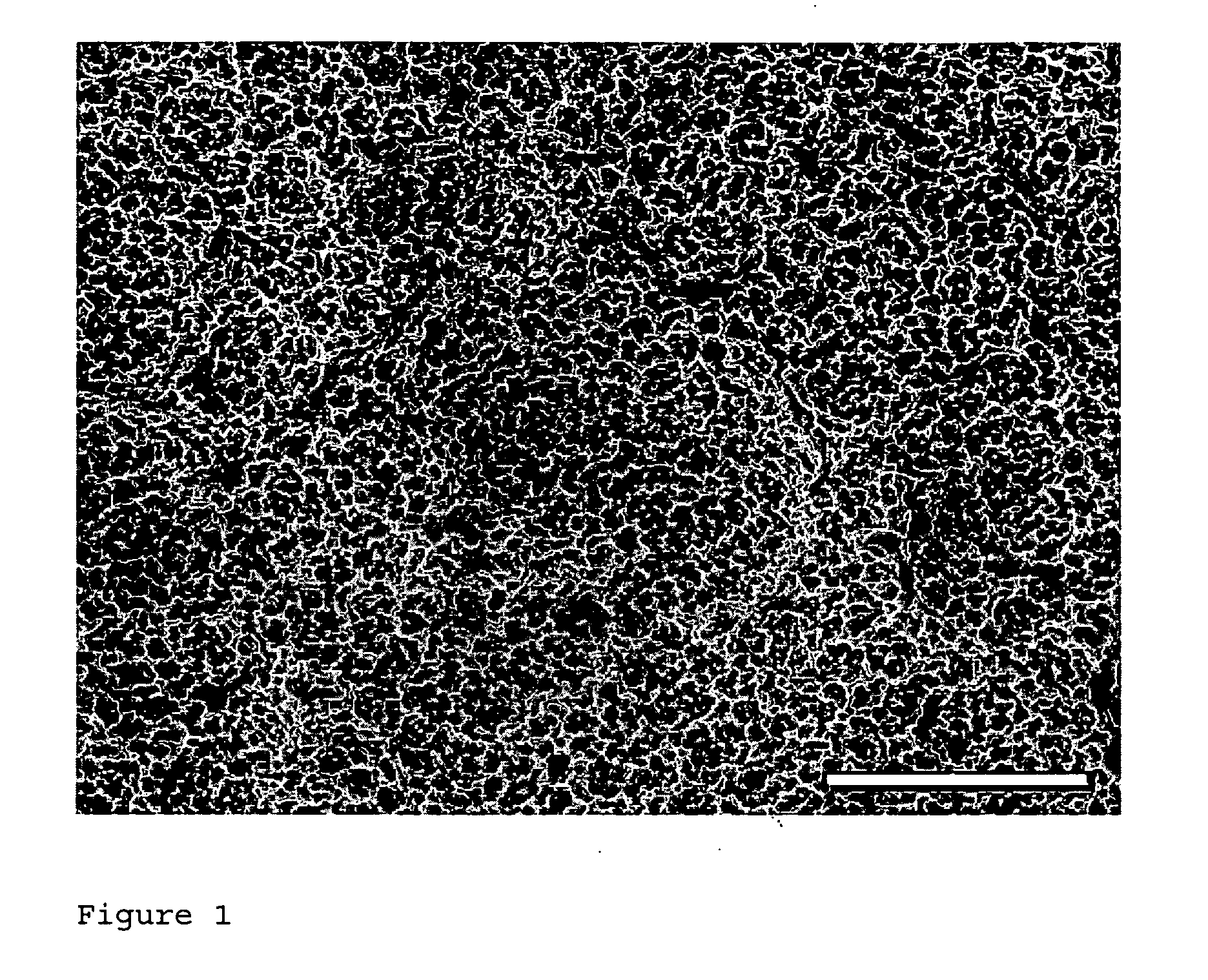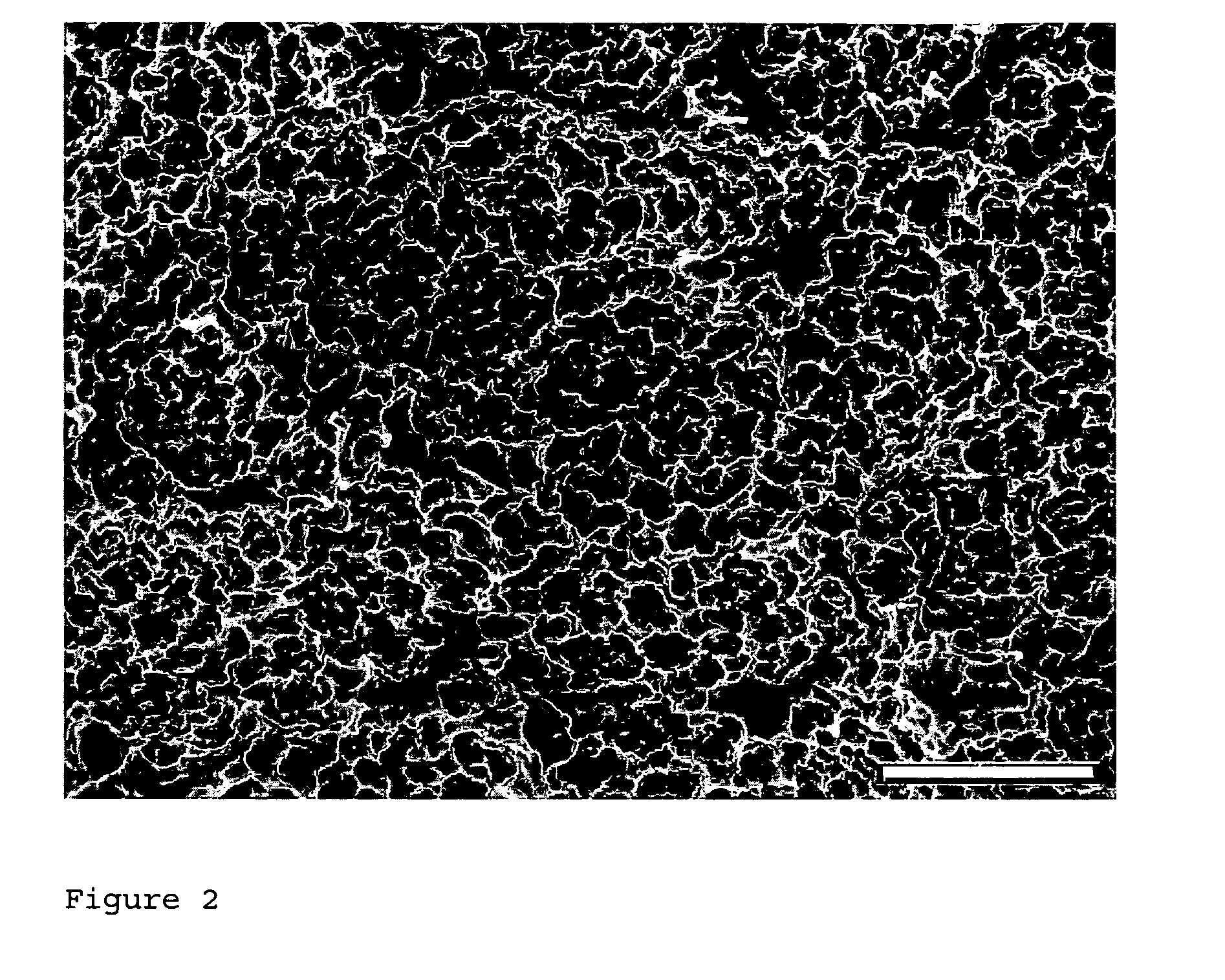Cell selective implant surface with controlled release of bioactive agents
a bioactive agent and cell-selective technology, applied in the field of implants, can solve the problems of non-optimal implant/tissue interaction, inability to provide optimal implants, so as to prevent acute or chronic inflammatory processes, fast healing, and mechanical stability. the effect of osseointegration
- Summary
- Abstract
- Description
- Claims
- Application Information
AI Technical Summary
Benefits of technology
Problems solved by technology
Method used
Image
Examples
example 1
Selective Cell Adhesive Surface with Drug Eluting Capabilities
A. Manufacturing of Rough Metallic Substrate:
[0093] The rough SLA implant surface is produced by grit blasting process with corundum particles (ø250 μm, pressure 5 bar) that leads to a macro-roughness on the titanium surface.
[0094] This is followed by a strong acid-etching bath with a mixture of HCl / H2SO4 at elevated temperature for several minutes, as described in EP0388576. This produces the fine 2-4 μm micro-pits superimposed on the rough-blasted surface. The surface is not microporous and therefore provides no enclosed volumes to reduce vulnerability to bacteria.
[0095] The chemical composition of the SLA structure was found to be titanium oxide (TiO2) using X-ray photoelectron spectroscopy. This method analyses the first few atomic layers of the surface, and thus the chemical composition of the material which is in direct contact and interacts with tissue fluids and cells.
B. Synthesis of Poly(L-lysine)-g-poly(e...
PUM
| Property | Measurement | Unit |
|---|---|---|
| Size | aaaaa | aaaaa |
| Size | aaaaa | aaaaa |
| Size | aaaaa | aaaaa |
Abstract
Description
Claims
Application Information
 Login to View More
Login to View More - R&D
- Intellectual Property
- Life Sciences
- Materials
- Tech Scout
- Unparalleled Data Quality
- Higher Quality Content
- 60% Fewer Hallucinations
Browse by: Latest US Patents, China's latest patents, Technical Efficacy Thesaurus, Application Domain, Technology Topic, Popular Technical Reports.
© 2025 PatSnap. All rights reserved.Legal|Privacy policy|Modern Slavery Act Transparency Statement|Sitemap|About US| Contact US: help@patsnap.com



